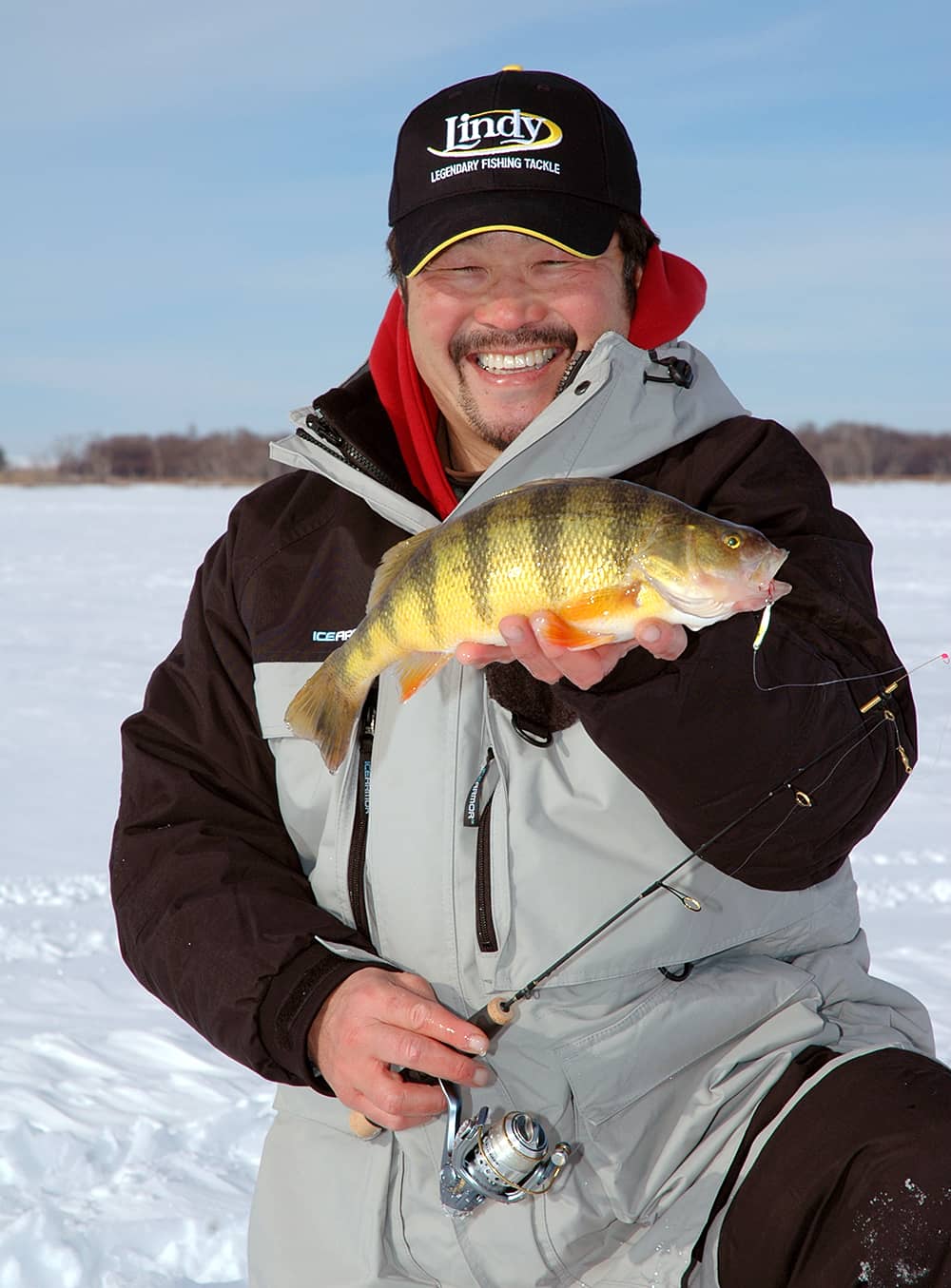Perch on Ice
Ted Takasaki 10.01.12

By Ted Takasaki and Scott Richardson
Walleyes are great fun to catch in open water, but when the water turns to ice, it’s hard to keep from looking for yellow perch. They can be found in abundance and are awesome in a fryin’ pan.
Try to focus your search in deeper water. You may catch lots of smaller fish shallower. But, the biggest fish are typically deeper in iced-over environments.
One of our favorite spots for jumbo perch is Devils Lake, North Dakota. But no matter where you’re fishing, your approach should be the same – find perch in deep water in lakes with a good forage base of insects or freshwater shrimp. That’s the formula for the biggest and baddest perch.
How Deep is Deep?
Deep is relative. At Mille Lacs Lake in Minnesota, 25 to 30 feet is deep. At Devils Lake, the biggest perch swim in 30 to 40 feet of water.
Start your perch outing the same way a professional angler approaches a lake before a tournament. Visit several bait shops, buy lake maps and gather what data are available before heading to the ice. Anywhere you fish, be ready to drill a bunch of holes over mud (or other soft-bottom) flats just outside the mouths of bays. That’s where perch can find the mayfliesand wigglers they love.
Some flats are expansive. It’s best to have three or four vehicles to divide up the area and search. It’s a simple matter to alert buddies with cell phones and radios when fish are found. Drill and drill and drill. The key to winter fishing is to keep moving. Some days the surface of the ice may look like the moon. It might take a long time, but when you find them, the fishing can be incredible.
Tools for Tracking Perch
- Keep track of known fish-holding coordinates. The same places seem to produce year after year.
- The second tool is a Humminbird ICE-55 flasher. Its zoom feature identifies a fish just inches off the bottom, where perch often are.
- The third is an Aqua-Vu underwater camera that lets you identify the marks to see if they are actually perch you’re seeing.
Your perch rig starts with an ultra-sensitive 24-inch St. Croix Legend LIR24UL ice rod. It has a built-in strike indicator to detect light bites. When you fish deep water, you can’t feel the bite, so you have to see it by watching the strike indicator and your line.
Spool up 6-pound-test (equivalent to 2-pound monofilament) TUF Line Ice line and tie on a Lindy Rattl’n Flyer spoon, for a flashy, noisy attractor. This setup will get your offering down to productive depths fast.
Try adding a 3- to 4-inch mono dropper, which ends in a small #10 plain hook. Change up colors to see what works best.
Wax worms can work well. But, also try packing on three or four spikes (often called Eurolarvae or maggots). When fish move away from the holes, split up the group, each moving 50 feet in different directions until the school is re-located. After a couple of moves, you’ll be able to predict which direction the school is likely to go as it continues to move. Perch in such places are often on the move as they follow moving food sources. It’s not always you spooking them, but you have to stay with them to stay with the action.
Presentation Details
Technique and presentation is tricky. Start by banging your lures on the bottom. Bounce, bounce, bounce action will stir the mud and insect larvae. Then, try the other extreme: a barely perceptible shaking motion. It’s more of a jiggle than jigging.
The exception is when a fish comes closer to your lure and then starts to move away. You can tell if the fish is close by watching the mark get redder and thicker as it comes into the center of the flasher cone and then starts to disappear. Shake it hard. You’ve got nothing to lose. An Aqua Vu camera camera can also tell you what kind of action turns them on or off. Perch often bite all day, with mid-morning seeming to be the best.
Work hard, work fast and catch fish. It’s as easy as that.

